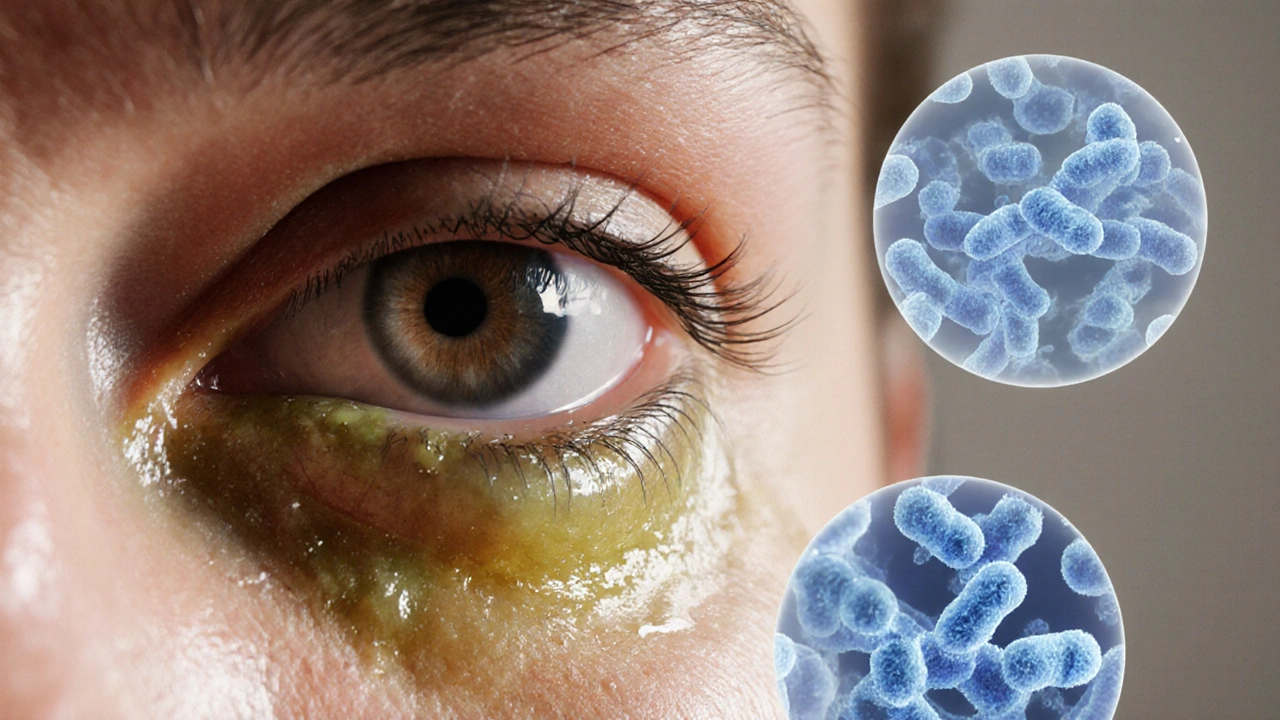
Bacterial Eye Infections vs Conjunctivitis: Key Differences Explained
Learn how bacterial eye infections differ from conjunctivitis, spot key symptoms, get treatment tips, and prevent future eye problems.
When dealing with conjunctivitis, an inflammation of the thin membrane covering the white of the eye and the inside of the eyelids. Also known as pink eye, it can affect anyone from toddlers to adults and often shows up as red, itchy, or watery eyes. Conjunctivitis isn’t a single disease; it’s an umbrella term that includes bacterial, viral, and allergic forms, each with its own trigger and treatment pathway. Understanding these subtypes helps you pick the right care and avoid spreading the infection.
Bacterial conjunctivitis, a type caused by bacteria like Staphylococcus or Streptococcus typically brings thick, yellow‑green discharge and may require prescription antibiotics. Antibiotic eye drops, medicines such as ciprofloxacin or tobramycin formulated for direct ocular use are the go‑to solution because they target the offending microbes while sparing the surrounding tissue. In contrast, viral conjunctivitis—often linked to adenovirus—produces a watery discharge and usually clears up on its own, though supportive care like cool compresses eases discomfort. Allergic conjunctivitis shows up during pollen season or after exposure to irritants, and antihistamine drops or oral meds can calm the reaction. The semantic link is clear: conjunctivitis encompasses multiple causes, each influencing the choice of treatment.
Our collection also covers specialty products like Cyclomune eye drops, a cyclosporine‑based formulation designed for dry‑eye related inflammation. While Cyclomune isn’t a first‑line drug for bacterial or viral forms, it illustrates how anti‑inflammatory eye drops play a role when the membrane stays irritated after the infection clears. The relationship “antibiotic eye drops treat bacterial conjunctivitis” and “anti‑inflammatory drops support recovery” forms a practical treatment map you can follow.
Prevention works hand‑in‑hand with treatment. Simple habits—regular hand washing, avoiding touching the eyes, and cleaning contact lenses with proper solution—break the chain of transmission. If you wear makeup, replace eye‑shadow and mascara regularly to keep microbial growth in check. Knowing that “poor hygiene fuels bacterial conjunctivitis” and “clean lenses reduce risk” gives you actionable steps before symptoms even appear.
Below you’ll find a curated set of articles that dive deeper into each of these aspects. Whether you need a step‑by‑step guide on choosing the right antibiotic eye drop, want to compare Cyclomune with other dry‑eye solutions, or are looking for practical tips on staying safe during a viral outbreak, the posts below cover the full spectrum of conjunctivitis care. Browse through the resources to get detailed, up‑to‑date advice that matches the specific type of pink eye you’re facing.

Learn how bacterial eye infections differ from conjunctivitis, spot key symptoms, get treatment tips, and prevent future eye problems.